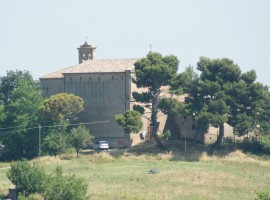
The Church of San Francesco, is the oldest Franciscan convent to be found in the entire Marche region. It was founded in the thirteenth century by S. Francis of Assisi and requested by the Acquaviva family itself. Initially it was a very humble stone building dedicated to the Madonna, which was then transformed into a convent due to a large sum bestowed by Emperor Frederick II. In the sixteenth and seventeenth centuries…
In St. Nicholas square, right in the center of the historical part of Acquaviva, there is the main church, dedicated to St. Nicholas of Bari, the patron saint of Acquaviva. Today’s building dates back to the first half of the XVI century, and stands where once was to have been an ancient crypt. The church was finished before 1612, when San Rocco was offered to the Augustinians. In 800 the church under…
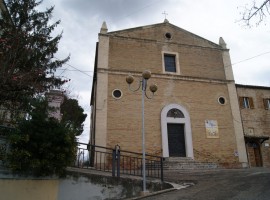
Founded in 1613 by the Discalced Augustinians, the church was expanded in time and therefore has a structure heavily edited. The facade is crossed by two horizontal frames and defined above by a simple gable. The entrance has been recently enriched by a beautiful bronze door decorated with a bas-relief depicting the life of the saint. The interior has a nave with a vaulted ceiling on the walls has large medallions with…
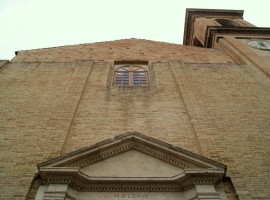
The Lombard masters Giovanni Andrea and Alessandro Donato were commissioned in 1572 by the City Factory nova Ecclesia. The church was completed in 1577, as evidenced by the commemorative date placed on the lintel of the main portal. The church was raised and after the Napoleonic invasion of 1798-99 were, beginning the last restoration and extension and construction of the majestic bell tower that led to the current configuration. The church of…
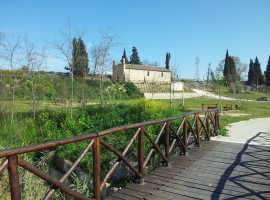
An ancient center of culture, industry, charity and Benedictine spirituality penetrated the low Tronto valley, the monastery of St. Benedict preserved architectural elements dating from its founding all’Altomedioevo (VIII-IX century). The tradition and the documents they want to work this ancient monument cenobites of Monte Cassino and, in fact, the early history speaks of strong ties with the Abbey of Monte Cassino, who left an indelible mark in the thirteenth tile door…
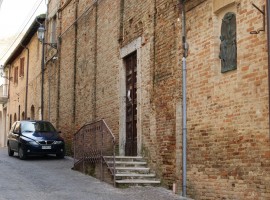
A few meters from the square, at the beginning of C.so Vittorio Emanuele III, is located the small church of the Confraternity of the date of construction is uncertain, only reference is an inscription on the outside wall in via Balestra reporting Pro Soc.te Dol. VII Annum Pose Jubilei 1751 – D. Leonardus Binni fecit … .. Inside are preserved an interesting painting depicting the “Deposition of Christ” of the century. XVI…
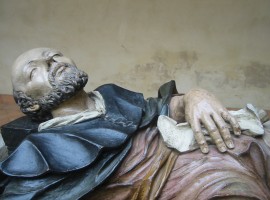
The Civic Museum is housed in several rooms of the ground floor of the former Convent of San Francesco. There are two sections that characterize it: that of “Sacred art”, represented by the frescoes in the cloister and the former refectory, as well as paintings, altarpieces and sculptures derived in part from the adjacent church of SS. Crucifix (demolished in 1965) and partly from other churches in the country; and that of…
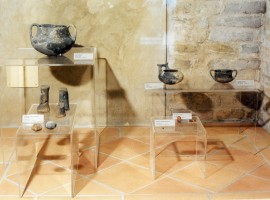
The Laboratory Museum of Archaeology is located in beautiful spaces inside the fortified walls of the Renaissance city. In Room A, dedicated to the funeral in the ancient world, it is shown two Roman tombs and artifacts found in the Roman necropolis of contrada Comunanza, with other Roman materials found in the area of Monsampolo during agricultural work. In the halls B – C – D, where they described the ruins of…
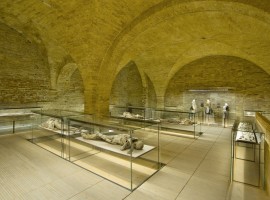
They were brought to light more than 20 mummified human bodies. Most of them are of mummies “natural” that the remains preserved for a spontaneous process of mummification; among these it was also observed a case of anthropogenic mummification obtained through a surgical procedure of evisceration. The climatic and environmental conditions are exceptionally allowed to preserve the bodies, but the clothes made from plant fiber. The examination of the clothes has highlighted,…
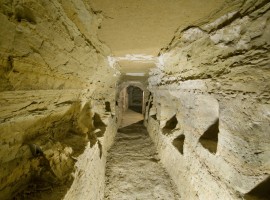
Percorsi Ipogei